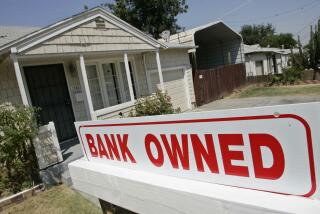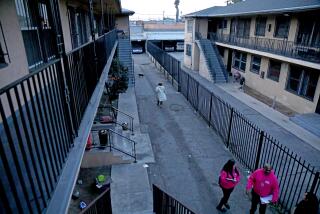Federal rent relief is coming. Here’s what to expect in California
Loss of jobs and income from the COVID-19 pandemic has put many people around the country, millions by the estimate of some experts, behind on their rent payments.
Eviction moratoriums, both a national one and a statewide one in California, expire at the end of the month, putting many at risk of losing their homes. In Los Angeles County, most evictions will be prohibited for longer even if the national and state rules aren’t extended. But everyone, no matter where they live, is required to eventually pay back what they owe.
Some help is on the way. The stimulus law passed by Congress in late December includes $25 billion in rent relief funds, with an estimated $2.6 billion coming to California. Here are some things you should know about that money.
Who is eligible for the latest stimulus bill’s rent relief funds?
Households that make 80% or less of the median income in their area and include at least one person who qualifies for unemployment or has experienced a financial hardship because of the pandemic.
Households must also show they are at risk of homelessness or housing instability to qualify.
The income qualification is determined by household income for all of 2020, or monthly income when your household applies for help.
States and local jurisdictions will distribute the money and must prioritize two types of households: those with incomes at or below 50% of the area median income, and those with one or more person who has been unemployed for at least 90 days.
Can undocumented individuals get rent relief money?
There is nothing in the stimulus law that prevents undocumented individuals from being eligible for rent relief, said Diane Yentel, president of the National Low Income Housing Coalition.
Local jurisdictions and states could still put such restrictions in place. The distribution process from Washington to states, and local policies, are still being sorted out.
How do I apply?
This isn’t clear yet. The U.S. Treasury Department says you will be able to apply through programs set up by states and some local governments.
Russ Heimerich, a spokesman for the California Business, Consumer Services and Housing Agency, said Gov. Gavin Newsom’s administration is ironing out details with the Legislature.
“There is a desire to get it distributed just as quickly as possible,” he said.
Officials with the city and county of Los Angeles also didn’t have a timeline for when their programs would be up and running.
Yentel said she expects some jurisdictions to start announcing how to apply by late January or early February.
In a statement, L.A. County Board of Supervisors Chairwoman Hilda Solis said the county is working with “stakeholders and other partners to obtain feedback on the program design.”
On Jan. 12, Los Angeles City Council President Nury Martinez submitted a motion that asks staff for recommendations on how to distribute the new rent relief funds.
Will I get the money directly?
The stimulus law says the money is supposed to go directly to your landlord or utility company, once you have been approved for it. If they deny it, the money can be paid directly to you.
Your landlord can also apply on your behalf but needs your consent to do so.
Yentel said her organization is urging program administrators to make the application process “as simple as possible” and require limited documentation, so the money gets out quickly and starts helping tenants and landlords.
What exactly can I use the money for?
You can use the money for unpaid and future rent and utility payments, as well as other housing-related expenses caused by the pandemic. (The law leaves the definition of “other” expenses to the Treasury secretary, who has not yet made a determination on what would qualify as an “other” expense.)
The law doesn’t place a dollar cap on the amount of help you can receive, but there are associated time limits. The maximum a household can get is 15 months of relief, but that depends on your demonstrated level of need.
State and local governments could still choose to set ceilings for how much money any household may get, Yentel said.
For more information on rent relief, you can visit the Treasury Department’s website and look under the heading “Information for Renters.”
How much is coming to California?
The state is scheduled to receive $2.6 billion, which includes money going directly to local jurisdictions.
Up to 10% of that money can be used by each jurisdiction on costs related to running the relief program and other services intended to keep people housed.
At least 90% must go toward paying rent, utilities and other housing expenses caused by the pandemic.
Is more money coming?
Potentially. On Thursday, President-elect Joe Biden released his American Rescue Plan, which includes an additional $30 billion in rent and utility relief. Congress would have to approve the spending.
More to Read
Inside the business of entertainment
The Wide Shot brings you news, analysis and insights on everything from streaming wars to production — and what it all means for the future.
You may occasionally receive promotional content from the Los Angeles Times.










